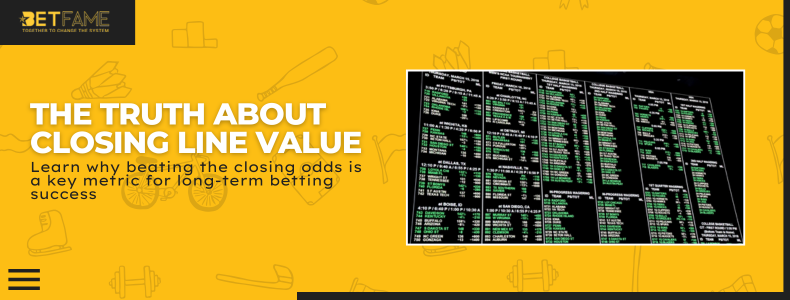
The Truth About Closing Line Value: Why It Matters (Even If You Lose)
You picked the right team. The stats backed you up. The bet lost. Sound familiar? If you’re serious about betting profitably, you need to look beyond wins and losses and start tracking Closing Line Value (CLV)—the single most important indicator of whether you’re making smart bets.
What Is Closing Line Value (CLV)?
CLV measures how the odds you bet compare to the final odds (closing odds) right before kickoff. It shows whether your bet had value at the time you placed it.
Example:
-
You bet Team A at +120
-
Closing odds drop to +100
-
You’ve beaten the closing line
That means your bet had value—even if it lost.
Why CLV Matters More Than One Result
Bookmakers adjust odds as information and bets roll in. The closing line is considered the most accurate reflection of a game’s true probability. If you consistently beat that number:
-
You're finding value before the market corrects
-
You're likely to profit over time
-
You're on the same side as sharp money
Winning individual bets is great. But beating the market is how pro bettors build long-term ROI.
CLV vs Luck: A Simple Truth
Even bad bets win sometimes. Even great bets lose. CLV filters out luck and tracks skill.
-
If you beat the closing line but lose: you're still betting well.
-
If you never beat the line but win short-term: that’s just variance. It won’t last.
How to Track CLV
1. Record Your Odds
Log every bet with the odds you got. Tools like Betstamp or simple spreadsheets work great.
2. Compare to Closing Line
Right before kickoff, record the final odds from a sharp book (like Pinnacle or SBO).
3. Calculate the Difference
If your odds were better than the closing odds = positive CLV.
Long-Term Impact of CLV
Let’s say you always beat the closing line by 0.10 odds over hundreds of bets. That edge compounds. In large sample sizes:
-
Beating CLV = positive expected value
-
Chasing bad lines = long-term loss
Final Thoughts
If you're not tracking CLV, you're betting blind. Wins and losses are emotional. CLV is mathematical. Beat the number. Let the results follow.
Tags :- Betting Guide
- Betting Help
- Betting Strategy
- Sports Betting
- Sportsbook
- Profitable Trends
- Soccer Players
- World Cup
- Betting Tips
- Team Reviews
- Player Analysis
- League Reviews
- Club Reviews
- Betting Market
- Manager Reviews
- Match Preview
- Transfers
- Soccer Betting
- Soccer Picks Web Series
- Betting System
- Betting Trends Web Series
- Players Analysis
- League review
- Southamerican soccer
- Betting markets
- Casino Betting








